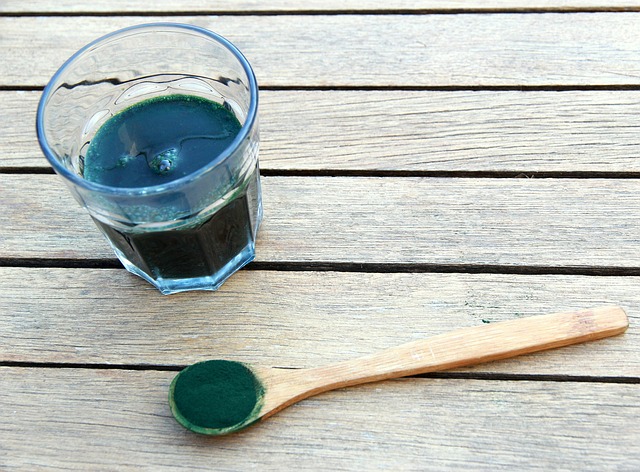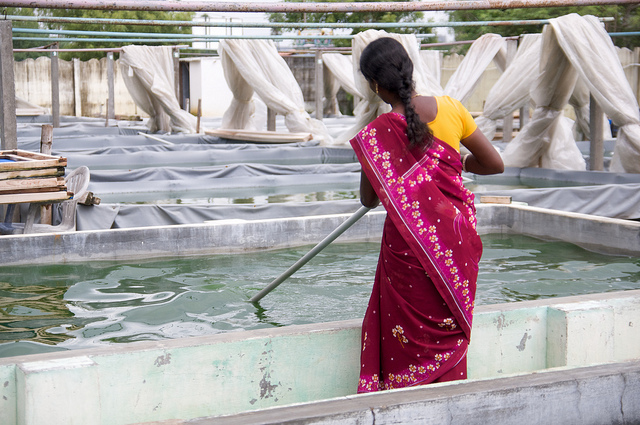
Complete Guide for Spirulina Cultivation at Home
In today’s vicious lifecycle of hectic schedules and never sleeping generation, health is taking a hit and it has to be the highest priority for anyone living the same life schedule. Spirulina is a substance the world is quite unaware of but has been on the increase of cultivation due to its usage in nutritional supplements and medicines.
It is actually an aquatic micro-organism which is often referred to be of the fungus family but as a matter of fact belongs to the bacterium family. It has various benefits including cognitive development, physical growth and immunity. It was supposedly rediscovered in the 1960s and started finding its way in market supplements only by late 20th century.
Spirulina cultivation in India has been growing at a very fast pace especially in the areas of Tamil Nadu where they find it very economical and comfortable to cultivate and sell the produce. Here is a complete guide on how to grow Spirulina.
Contents
1. Required Conditional Parameters
 Before deciding to start cultivating Spirulina, one should have all the resources and requirements ready. First and foremost, of that is the climatic conditions of the area. This is something which you cannot change and might end up spending a lot in trying to create a suitable artificial environment for the cultivation. The required temperature for good produce of spirulina is between 25 °C and 35 °C.
Before deciding to start cultivating Spirulina, one should have all the resources and requirements ready. First and foremost, of that is the climatic conditions of the area. This is something which you cannot change and might end up spending a lot in trying to create a suitable artificial environment for the cultivation. The required temperature for good produce of spirulina is between 25 °C and 35 °C.
Also, places that have good amount of sunlight present throughout the cultivation process is most suitable. The best temperature range is however around 35-37 °C. Cultivation during the rains or at places which are very wet should be avoided since that can contain the amount of sunlight which is necessary for a good yield. So, this is the first step of deciding whether your location is suitable for the cultivation of spirulina and if it is move on to next steps.
2. Material Required
Spirulina is grown in large water tanks that are made of cement or plastic. Though it can be of any large size, the standard practice uses a tank of 10 x 5 x 1.5 feet. This is to ensure the ratio of other organic and inorganic products added to produce the best yield of spirulina possible in the given area. A pump is also required to draw water and pump in water to the tank. It should be efficiently able to pump 1000 L of water as that’s the amount required which will be filled up to a height of 2-3 feet in the tank.
Apart from these you require thermometer, pH sensors, air compressors etc for checking various growing conditional parameters. There is also a list of chemicals like urea, sodium chloride, sodium bi carbonate, sulphates of magnesium, potassium and ferrous, and phosphoric acid which is required for creating a suitable culture medium. The mixture after adding a kilogram spirulina mother culture should be agitated for a week for about half an hour daily using a long stick.
3. Cultivating Procedure
Having a suitable tank is the first requirement and can be either made artificially in the form of tank or a pre-engineered tank can be used for the process. The culture medium has to be created after this and that can be done by basically mixing all the materials. All the chemicals are added to 1000 L of water and mixed thoroughly. Seeding is done with concentrated spirulina mother culture which then multiplies in the medium over a period of time.
The pH, which is a level of basicity and acidity of the culture medium has to be monitored at regular intervals. Concentration of algae is the deciding factor for when spirulina can be and should be harvested. Usually, the measure is about 0.5g of algae per litre of culture medium.
A Secchi disk can be used to measure this. Spirulina is a very nutritious substance and tends to lose its nutrition value very soon, almost within hours of harvest and hence it needs to be stored properly.
4. Harvesting of Spirulina
The algae concentration in the tank is the deciding factor for harvesting spirulina. Like mentioned above, 0.5g/L is the ideal concentration. This is usually achieved 10 days after the seeding process is complete. The algae are collected and passed through a simple filter which drains out the water.
This is one of the most efficient spirulina cultivation methods. After the filtration process, the algae are pressed upon by large weights to further reduce the moisture content. The product is now pretty dry and can be sent for further processing which is done in machines.
Next process involves processing the algae through machines which are used for making noodles and thin strips of algae is made for the ease of further processing. The noodle shaped algae are kept on a clean cloth and is dried under the sun.
It is allowed to dry foe a couple hour under the hot sun. It endures that the algae have completely dried now and is ready for the next process. The next step involves grounding of the algae in a similar way flour is produced.
The spirulina is grounded and made into a powder which is then further tested. The testing of spirulina is done in laboratories where they check the edibility of the product and mark it safe for consumption or not.
5. Challenges in Spirulina Cultivation and Solutions

There are certain challenges faced during the cultivation of spirulina. Be careful with the temperature of the water and start cultivation with a clean tank to avoid any discolouration of the medium. Allow enough sunlight or the cultivation might turn pale and growth will stop.
Sometimes there could be foam formation in which case some ash water can be added to reduce foaming effect which will take a hit ton the produce. Urea is very important in the cultivation and if a gelatine type substance starts forming, it can make the mixing almost impossible. In that case, more urea should be added to the medium.
Do not allow the mixture to reach a stage where they might smell like ammonia. It is not good for the cultivation process and more water should be added. Keep the nutrient check on scale especially if the mixture starts turning lime green. There could be problems especially when you are starting out new and the harvesting should be done at the right time.
6. Cost of Cultivation and Profits
Spirulina cultivation is a low investment and high-income farming. Those who have been in the business for a while know the economic benefits of it. The spirulina farming cost is low and the profits that can be obtained are quite high. Finding buyers for the produce is also easy given there isn’t much availability of it in the market and the produce can be sold for almost as high as Rs 1200/kg.
The cost of cultivation depends on the cost of raw materials, local labour, packaging and logistics and are dependent on the local market. It may vary from place to place.
7. Maintenance and Repairs
This is a continuous process and can be carried throughout the year. It is important to maintain the tank and repair if any damages incur during the process. The culture has to be protected from any foreign contamination of unwanted viruses and fungi. They can turn the whole process into a waste and incur huge losses to the producer. Make sure to not overfill the tanks in any case as that will not gain you profits in any way rather only make losses.
8. Training on Cultivation
There are various programmes out in the market that provide spirulina cultivation training to many people. Skill training in the field is very important to not make silly mistakes which might spoil the whole yield hence the training process is precise and doesn’t take very long to learn either.
Once you have obtained the certification and the training you can either be your own boss and start cultivating in your own backyard or you can manage someone else’s cultivation. The market is open and flexible to spirulina cultivation and the scope is huge given it has a lot of benefits.
After this you are at a better position to cultivating and selling spirulina in the market. It is one of the most efficient and simplest ways of earning money. The uses of spirulina are immense and you are never going to run of buyers given you maintain quality and standard of the product.


